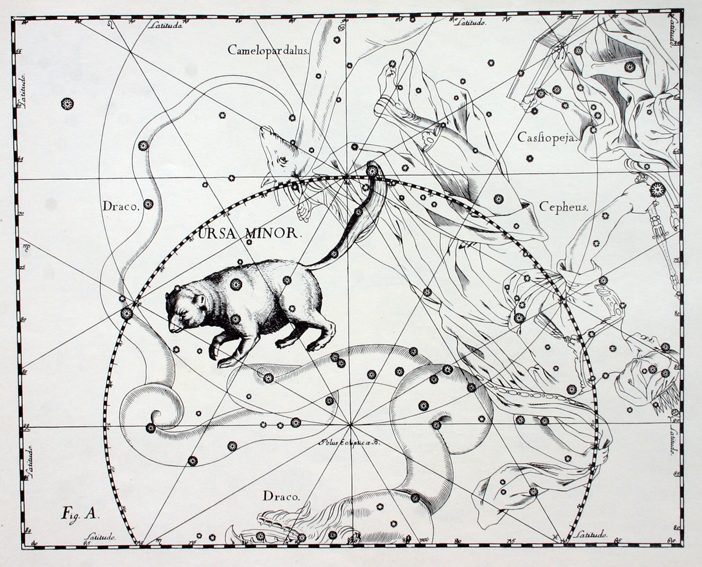
By IAU and Sky & Telescope magazine (Roger Sinnott & Rick Fienberg) [CC-BY-3.0], via Wikimedia Commons
"The Little Bear"

By IAU and Sky & Telescope magazine (Roger Sinnott & Rick Fienberg) [CC-BY-3.0], via Wikimedia Commons
Abbreviation: UMi
Genitive: Ursae Minoris
Constellation family: Ursa Major
Nearest constellations: Cepheus, Chamaeleon, and Draco
Right ascension: 14.78h
Declination: 74.36°
Visible between latitudes: +90° and -10°
Square degrees: 256
Luminary: Polaris (Alpha Ursae Minoris)
Named stars: Polaris, Kochab, Pherkad, Urodelus, Yildun, Akhfa al Farkadain, Anwar al Farkadain
Notable deep sky objects: Ursa Minor Dwarf, NGC 6217

By Johannes Hevelius [Public domain], via Wikimedia Commons
Ursa Minor is a small constellation in the Northern Hemisphere and is visible year round. It contains Polaris, also known as the North or Pole Star, which is the closest star to the northern celestial pole. Due to its location, Polaris appears to remain stationary in the sky while all the other stars rotate around it.
Ursa Minor is the source of the Ursid meteor shower. The Ursids occur every year from December 17-23 and typically peak around December 21. At the shower's peak there can be up to 20 meteors per hour.
In Greek mythology, Ursa Minor is associated with Ursa Major and is thought to represent Arcas, the son of the nymph Callisto. Callisto had an affair with Zeus and was turned into a bear by Zeus's jealous wife Hera. Later, Zeus placed both mother and son in the sky as constellations.
NGC 6217 (barred spiral galaxy):

By NASA, ESA, and the Hubble SM4 ERO Team [Public domain], via Wikimedia Commons